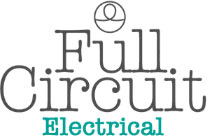Top 10 Considerations When Planning Garden Lighting
Garden lighting can help provide a great atmosphere while enhancing the visual appeal of that space. Not only that, but proper garden lighting can help you spotlight various features and spruce up the overall garden design in a clever manner. However, it can be challenging to plan your garden’s lighting properly. That’s why you need to plan everything accordingly, and here are some ideas to focus on!
1) Is your current electrical installation up to current standards and suitable for adding new outdoor supplies?
Before you think about anything else, it’s imperative to assess the overall structure and state of your electrical installation. That assessment will show if there’s a need for upgrades. If the system is already old, then a complete replacement is the best idea to focus on. We also recommend checking the earth cables to the gas meter or the water stop tap.
If you have oil, check the electrical installation near the oil pipe. Another thing to focus on is RCD (residual current device) protection, which is necessary for your fuse box or consumer unit. Thankfully, you can see if you have RCD protection; all you have to look out for is the test button near the main switch.
2) How will the wiring be installed?
Generally, you want to hide cables and ensure that your garden has seamless lighting. Also, seal the connections, because gardens can sometimes have water and you should avoid any problems. It also helps if the ground is soft so you can trench your cable.
However, if you have concrete or paving, it’s better to go with overhead wiring. In some cases, you can also use the fence or a perimeter wall to guide your wires. Also, water buildup is a problem if you keep your wires at the ground level, so adequate drainage is a must-have!
3) What features or areas do you want to illuminate?
You also want to think about the items or features you want to illuminate. Many gardens have excellent, unique characteristics that you need to showcase with proper lighting. That’s especially true if you have a water feature, plant walls, shrubs, trees, etc. It’s a good idea to create a list with the features you need to illuminate, and then you can see what electrical installation works in their case.
You can also illuminate multiple features and create a sense of contrast by using different light types and colours. Sometimes even colour matching might be an option. That gives a sense of consistency while allowing you to illuminate multiple features throughout your garden.
4) How do you want the lighting to be controlled?
It’s just as important to choose a comprehensive and reliable light control system. Here you have different options; you can go for a daylight sensor or a timer. For some people, a daylight sensor is enough, but a timer is better since it gives you more control.
You can also opt for a light switch accessible via a smart app. That’s great because it helps you set the scene and customise your light colours. All of these are great options; it comes down to your expectations and how much customisation or hands-on approach you need.
5) What colour lighting would you like?
Colours are also something you want to consider when it comes to garden lighting. While warm white is one of the most common lighting options, it’s not the only one people use. Cool white is also popular, along with other colours. There are colour-changing garden lighting options too, or even colours like green, blue, etc.
As always, you need to think about the intensity as well. Some people prefer to have 2800k warm LEDs, but you can go with more powerful lights for your garden. The idea is to showcase your plants and see them even during the evening. That’s especially true if you have lots of flowers and want to create an incredible look for your property.
6) Do you want to be able to dim down the lights?
When you’re illuminating your garden, one of the things you can do is dim your lights. Not everyone needs such a feature, but it does bring more control and enhances your garden’s look. You can also dim the lights for specific areas. That’s a great idea because it allows you to better customise your garden lighting without making it too complex.
If you’re looking for a light-dimming system, you can use a smart app. It’s an excellent way to customise your garden’s look and appeal. Automating your garden’s light system can be tricky, but smart apps can help make that process a lot easier!
7) Do you want outdoor power sockets?
Some people want a complete electrical system outdoors, including power sockets. If you’re looking to stay in your garden, maybe use a music system or a laptop, then you can’t rely solely on batteries. Adding some outdoor power sockets can be extremely helpful.
If you go down that route, you must ensure you create a waterproof electrical system with power sockets that are away from any water damage. Make sure that you’re adding these power sockets close to the places where you want to use them. It helps enhance the convenience aspect while also making the experience better.
8) Would you like Ethernet ports?
While you can have Wi-Fi extenders to cover your garden, that’s not always ideal. An Ethernet connection brings you consistent internet speeds, which are vital if you need to work with large files, access websites faster, etc. If you need to add one or more Ethernet ports, consider that when planning your garden lighting system. Having multiple ports can be great too! You can use these for a music system, laptop, or a variety of other Internet-bound gadgets.
9) Would you like electric patio heaters to keep you warmer when the temperature drops?
You may want to use an outdoor space even when it’s chilly outside. In this case, having an electric patio heater is an excellent idea. We believe that investing in such a device is worthwhile, but you need to plan for it when creating your garden lighting system. It’s a good idea to pick the heater you want, see the overall requirements and then ensure you have plenty of power to run it properly. It’s always a good idea to have one or more plugs for patio/garden devices. Planning for a heater is excellent since you’ll use it when temperatures drop.
10) Do you have a shed or outbuilding where it would be advantageous to have lights & power?
Most garden owners also build a shed or an outbuilding. These are great for storing garden equipment. It’s a great idea to illuminate these buildings as well. That’s why you should consider creating a small electrical system to deliver the necessary power you need. You can try and do this firsthand, or it can be a future project.
Other things to consider
LED lighting is affordable, and it delivers a great look. In addition, you may want to consider using different types of lighting systems, like spotlights, inground lighting, outdoor post lighting, path lighting, maybe even deck lighting, or underwater lights. Playing around with different strategies will help you enhance your garden’s look!
It will take a little while to experiment and find the right garden lighting system to fit your needs. However, it’s well worth your time and money. It would help if you always try to make your lighting systems discrete and ensure the atmosphere is cozy and fun. Creating an excellent plan for your garden lighting will save you lots of money and ensure you’re getting things right the first time. That’s why it’s crucial to take your time and plan everything according to your needs!
If you need any assistance with garden light planning, don’t hesitate to contact us for helpful, friendly and professional advice. We will even come to you to assess your needs and discuss the best options that fit your requirements. It’s all free of charge, so don’t hesitate and get in touch with us today! We operate in the York, Harrogate, Ripon, Leeds, Malton regions and the surrounding areas










